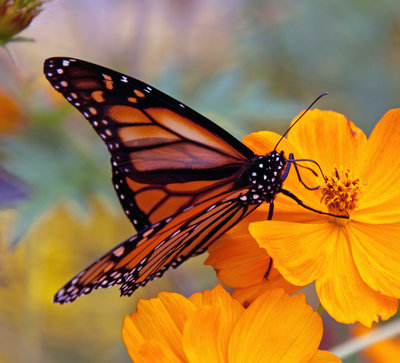The U.S. Department of Agriculture’s Natural Resource Conservation Service (NRCS) has introduced incentives for farmers and ranchers to plant milkweed in an attempt to protect pollinators.
“Counts of the familiar orange-and-black insects, admired for their flights of up to thousands of miles a year, are trending down so sharply that their migration is now under threat,” said a statement from the Fish and Wildlife Service.
Most of the discussion around pollinators centers on protecting the honeybee, but monarch butterflies are also important to pollination across large swaths of North America due to their continent-long migration.
Monarch butterflies use milkweed to lay their eggs during their annual migration. Additionally, the leaves of milkweed are the only food source for monarch larvae. In fact, data suggests that the decline in monarch populations can be attributed to a decline in the abundance of milkweed.
Beyond benefitting pollinators, milkweed fibers can be used in the making of pillows and rope. Milkweed is also able to serve as a natural pest repellent.
Protecting the monarch butterfly requires more than just farmers’ efforts, however.
Since the monarch butterfly is a migratory insect, efforts to protect their habitat must include Canada and Mexico as well as the United States. President Obama, Mexico President Enrique Peña and Canada Prime Minister Stephen Harper met last year to discuss a continent-wide effort to save the monarch butterfly.
To that end, the White House proposed a “butterfly highway” last month.
Following the I-35 corridor from Laredo, Texas, to Duluth, Minnesota, is the heart of monarch butterflies’ eastern migration path. Planting milkweed along this highway and making the area around it more hospitable to monarchs could bolster monarch populations up to 225 million by 2020.
“The idea is to use it as this iconic pathway to work with schools, farmers, ranchers, and park districts to improve habitats for 50 to 100 miles on either side of the I-35 corridor,” said ecologist Scott Black, executive director of the nonprofit Xerces Society for Invertebrate Conservation.
Planting milkweed on farmland and on the I-35 corridor will help make progress on monarchs’ long-term viability, which in turn helps the pollinator situation as a whole.
It is, however, important to plant native milkweed. Tropical milkweeds live longer into the fall and winter and the long-term effect that has on monarch populations is currently unknown.
“It’s sad, because people think planting milkweed will help,” University of Georgia Ecology Professor Sonia Altizer told the New York Times. “But when milkweed is available during the winter, it changes the butterfly’s behavior.”
The North America Monarch Conservation Plan has a goal for 10 million acres of monarch habitat to be created or restored in the United States, of which I-35 and farmers’ fields are just a part.
USDA program encourages planting milkweed to protect monarch butterflies




 Alerts Sign-up
Alerts Sign-up